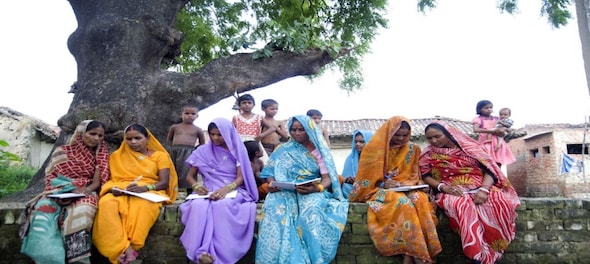
Decentralised renewable energy (DRE) technologies have a huge potential to solve or to create an opportunity for rural, sustainable livelihood opportunities for rural women. According to a recent study by CEEW-Villgro, 70 percent of women, out of 700 DRE application users, experienced 33 percent rise in their income for six months.
Prachi Singhal of Council on Energy, Environment and Water said, “Over 90 percent of DRE application users believe that their business knowledge or the competence and skills to run a business became more relevant after using DRE technology.”
She added most of the women who run solo businesses wish to continue using this technology and many of them have recommended DRE-tech to other women or self-help group members.
Also read: Limiting global warming to 1.5 degrees Celsius not plausible, states German research report
Other than income, these DRE technologies help reduce time poverty – a major gender-related issue. Time poverty is when women are caught in unpaid domestic work and usually society doesn’t value or attach an economic value to that effort.
The key highlights of the report include boosting women's livelihood opportunities using DRE-powered technologies; For effective gender mainstreaming, technology providers and promoters should build their internal capacity to understand the needs, expectations and constraints of their women stakeholders; Organising in-person demonstrations and events where women end-users share their experiences among potential adopters is one effective pathway to promote new technological solutions; and lastly, the role of financiers, market enablers and support from other private players in unlocking financing and market linkages for women.
Meanwhile, another CEEW study reveals that in India, women account for only an average of 11 percent of the total employees in the rooftop solar business of surveyed companies as compared to the global average of women in the renewables sector at 32 percent.
In India alone, CEEW estimates a market upwards of USD 53 billion for using clean energy for productive enterprises in rural areas such as cold storage, looms, rice mills, and sewing machines.
Commenting on Powering Livelihoods programme – a joint initiative between CEEW and Villgro, Prachi Singhal added, “During the course of the programme, we learnt that the models or solutions by startups don't necessarily have to be clean energy powered, but tech-enabled livelihood solution can at times work for women at large.”
But stressed, “DRE technologies help address challenges faced due to lack or shortage of electricity.”
Singhal added that individuals running small businesses believe that to reach its full economic potential they need to use it for a year. ‘That is when they are able to recover the money they invested.’
In February 2022, MNRE released a policy framework on DRE livelihood applications. “While the draft framework has been announced, the policy along with allocation & subsidy for the policy is yet to be announced. The framework alone has helped create awareness around DRE applications, especially among financial sectors.” A budgetary allocation for this area will give impetus to India’s renewable plans.
At present, large players like Tatas and Godrejs are offering various DRE applications in rural India. “While large players can build confidence, small businesses can innovate.”
Also read: Kiren Rijiju calls for urgent action to protect vulnerable children at national conference
First Published: Mar 2, 2023 9:40 PM IST
Check out our in-depth Market Coverage, Business News & get real-time Stock Market Updates on CNBC-TV18. Also, Watch our channels CNBC-TV18, CNBC Awaaz and CNBC Bajar Live on-the-go!


Lok Sabha elections 2024: 28% of candidates contesting in fourth phase are 'crorepatis'
May 9, 2024 4:29 PM
Free poha-jalebi to movie ticket discounts: How cities struggling with 'urban apathy' are luring voters to polling booths
May 9, 2024 3:17 PM

